Analysis
April 10, 2025
US steel exports fall in February: Commerce
Written by Brett Linton
The volume of steel exported from the US declined in February, reversing January’s surge, according to the latest US Department of Commerce figures. This comes just two months after export levels had fallen to a two-year low.
Steel exports dropped 13% month over month (m/m) in February to 677,000 short tons, the third-lowest rate recorded in over a year (Figure 1). February trade was 12% below the 2024 monthly average of 770,000 st and 19% lower than the same month last year.
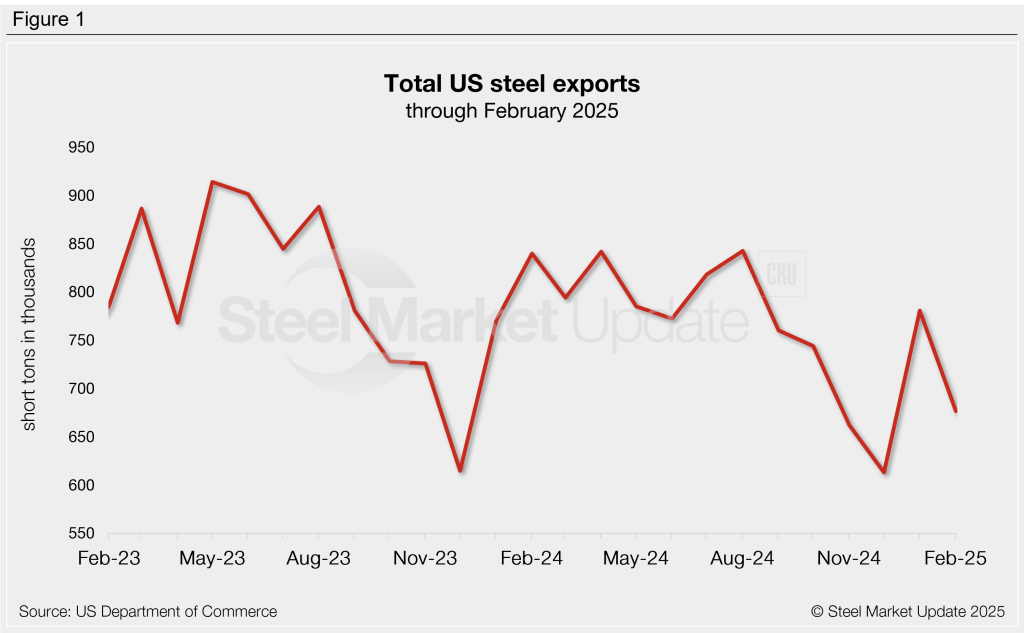
The bulk of US exports go to US-Mexico-Canada Agreement (USMCA) trading partners, with half of February exports going to Mexico and 43% to Canada. Other notable destinations, each accounting for 1% or less of total exports, included the Dominican Republic, China, the Bahamas, Sweden, Germany, the United Kingdom, Italy, Brazil, South Korea, India, Turkey, and Colombia.
For detailed information on specific product or country exports, visit the International Trade Administration’s Steel Mill Export Monitor
Monthly averages
Analyzing steel exports on a three-month moving average (3MMA) basis can better highlight underlying trends by smoothing out monthly fluctuations (Figure 2, left). After peaking in July 2023 at a five-year high of 887,000 st, 3MMA export volumes declined by the end of 2023 following typical seasonal slowdowns. Volumes partially recovered through mid-2024, though not to the highs seen in 2023, then fell to a two-year low in December 2024. The 3MMA has increased each of the last two months, rising to 690,000 st in February. This rate is notably lower than the same time last year (741,000 st).
Exports can be annualized on a 12-month moving average (12MMA) basis to better showcase long-term trends by eliminating seasonal variation (Figure 2, right). From this perspective, annualized exports have declined over the past year, though they remain elevated compared to 2019-22 levels. The February 12MMA slipped to a 22-month low of 758,000 st, down from a five-and-a-half-year high of 805,000 st recorded one year prior.
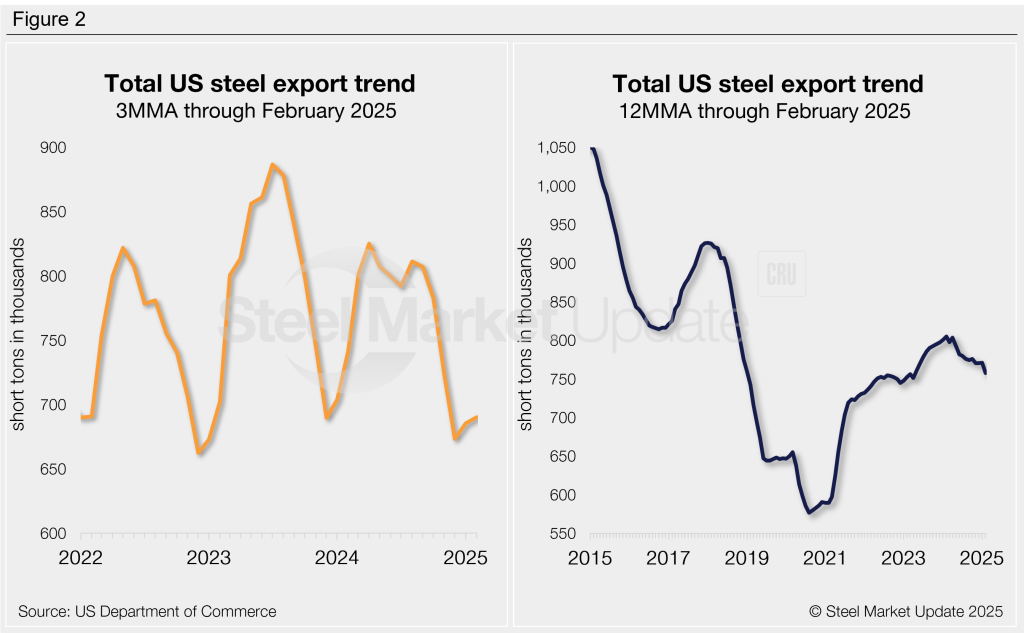
Exports by product
Flat-rolled steel exports declined in February across all six of the sheet and plate products we track. Export volumes for all six products were lower than their 3MMA and 12MMA rates through February, except for cut-to-length plate and galvanized, which exceeded their 3MMA. Significant movements from January to February include:
- Hot-rolled sheet exports declined 35% to a 26-month low.
- Cold-rolled sheet exports fell 35% to a 14-month low.
- Exports of coiled plates decreased 32% to a 16-month low.
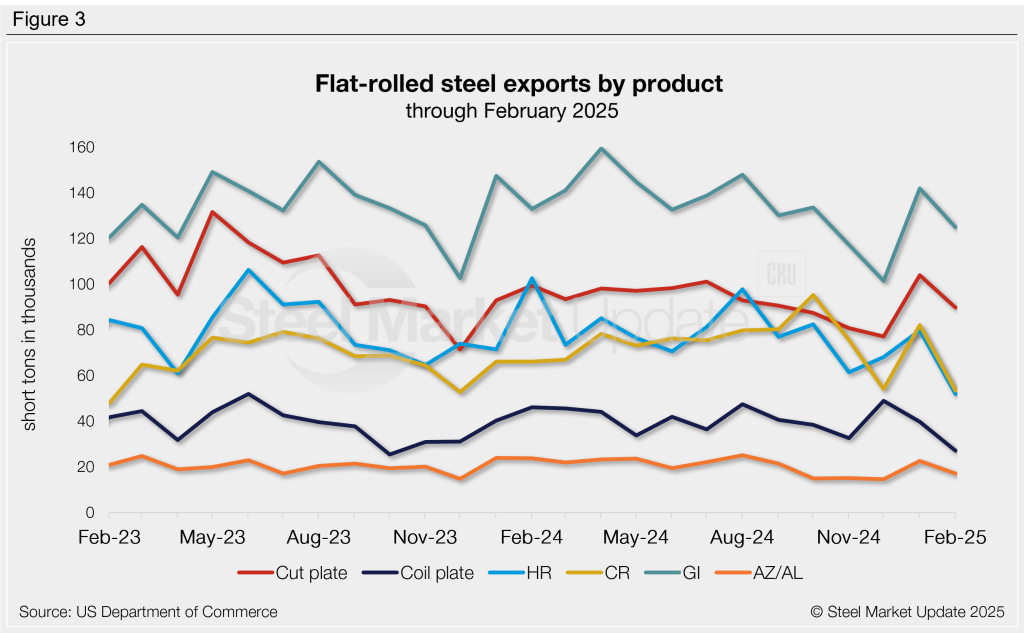
Compared to the same month last year, February exports were lower across the board this year. Significant year-over-year (y/y) changes were seen in exports of hot-rolled sheet (-49%), coiled plate (-41%), and other metallic coated (-28%).
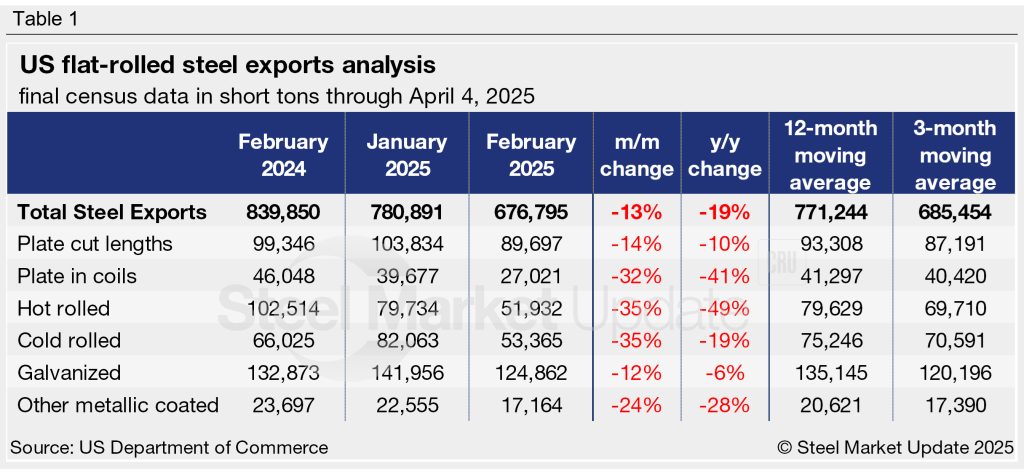
Figure 4 shows a history of exports by product on a 3MMA basis.
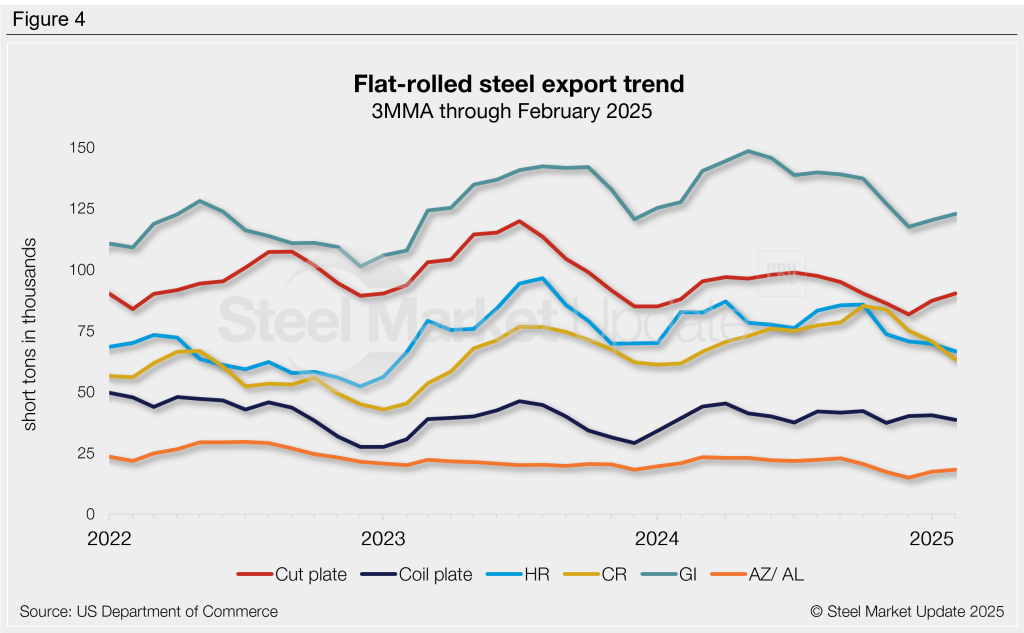
SMU members can view historical steel trade data on the Steel Exports page of our website.







